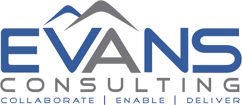 In our experience conducting operational reviews and helping clients resolve compliance issues, ECG has found that a lack of training in the financial aid office can pose a serious risk for the entire institution. Without adequate training, there is a much greater likelihood that processing errors and inconsistencies will occur in the administration of financial aid. Not only can this create financial risk for a school if the errors result in liability following a program review or audit; it can also tarnish the school’s customer service record, which may, in turn, impact enrollment.
In our experience conducting operational reviews and helping clients resolve compliance issues, ECG has found that a lack of training in the financial aid office can pose a serious risk for the entire institution. Without adequate training, there is a much greater likelihood that processing errors and inconsistencies will occur in the administration of financial aid. Not only can this create financial risk for a school if the errors result in liability following a program review or audit; it can also tarnish the school’s customer service record, which may, in turn, impact enrollment.
Yet, with all the demands placed on financial aid offices and with many operating under a staffing shortage, how can schools ensure adequate training for their financial aid staff?
As with any business challenge, it starts with developing a plan. A well-coordinated training plan for the financial aid office should include strategies for both new and current employees. Below are some suggested best practices.
New Employees
- Provide written documentation on standard operating procedures. Regardless of their prior financial aid experience, all new employees will need training on the financial aid system and procedures specific to your school. Your financial aid policies and procedures manual should be a key training resource for both new and current employees. But even if you don’t have a fully developed manual, it’s critical for new employees to have written procedures (including system documentation) for processing tasks such as verification and packaging aid. Even some simple checklists can be helpful.
- Assign FSA COACH: New staff members with little or no prior financial aid experience can complete FSA COACH, a free, online tutorial from the U.S. Department of Education (ED). FSA COACH has nine modules covering approximately 40 hours of instruction, which users complete at their own pace. The course includes interactive exercises, printable job aides, quizzes and other resources to enhance the learning experience.
- Schedule summer “boot camp”: If your office budget allows, send new employees to a summer boot camp offered by your state or regional financial aid association. These events are a great way to provide new employeeswith uninterrupted time for hands-on learning and networking, and help them get fired up about their new career.
Current Employees
- Schedule annual conference attendance: Ideally, your training plan should allow all of the financial aid staff the opportunity to attend at least one annual conference, whether it’s through your state or regional financial aid association, NASFAA or ED. Along with gaining knowledge about current issues and regulatory changes, conference attendance provides staff with the opportunity for networking and recharging, which are essential for avoiding burnout.
- Turn the conference attendance into a learning experience for your entire staff: After the conference, have your employees present a recap of the sessions they attended during your next regularly scheduled staff meeting. Encourage discussion about key topics from the conference and how they apply at your school. Also, set aside an area on your intranet where staff can post conference materials for reference by everyone in the office.
- Make training an ongoing part of your staff meeting agenda and hold regular staff meetings. Depending on the frequency of your staff meetings, you can devote either a portion of each staff meeting or an entire meeting to training. For example, each January/February, you can provide training on the new year verification requirements. (This training could also occur in June if the new requirements are effective in July.) Although it’s sometimes difficult to maintain a regular schedule of staff meetings, this is vital for several reasons. Staff meetings provide time for employees to connect and discuss work issues without interruptions from students or other members of your campus community. They also provide a time for sharing important announcements about changes that may affect your financial aid operations. Sharing these announcements in a group staff meeting—rather than via email—can help ensure everyone is on the same page before the changes occur. Staff meetings are also an important time for team building and mentoring.
- Encourage staff participation in webinars. Many organizations—including ED, NASFAA, and other partners in the financial aid community—offer webinars covering financial aid topics. While some require a fee, others do not. Typically, the webinars are 60-90 minutes and participants can often access archived recordings for weeks or months after the live webinar. These training resources are a convenient way for financial aid staff to receive continuous training throughout the year.
- Bring training to your staff. It’s sometimes valuable to host a training event directly on your campus, especially if there’s a large audience or a need for customized training beyond what might be offered through a conference. Along with the benefit of face-to-face contact, on-site training can provide the opportunity for hands-on exercises and discussion about topics specific to your school. In addition, depending on the provider, the training may include an assessment component for measuring employee learning gaps and gains. These metrics can be extremely helpful when making a case to your administration for additional training and/or staffing.


